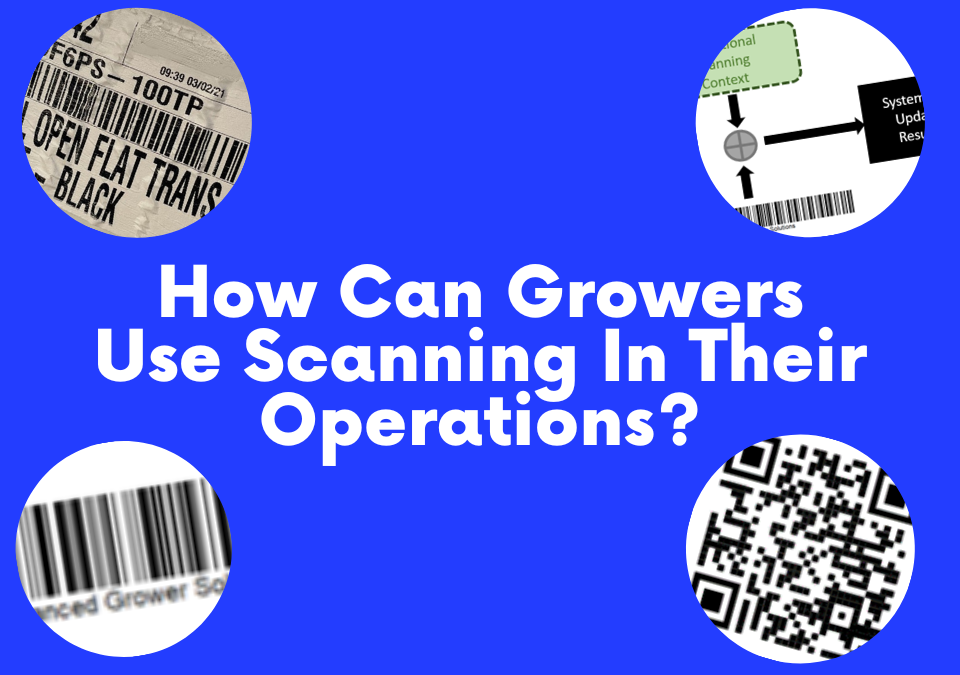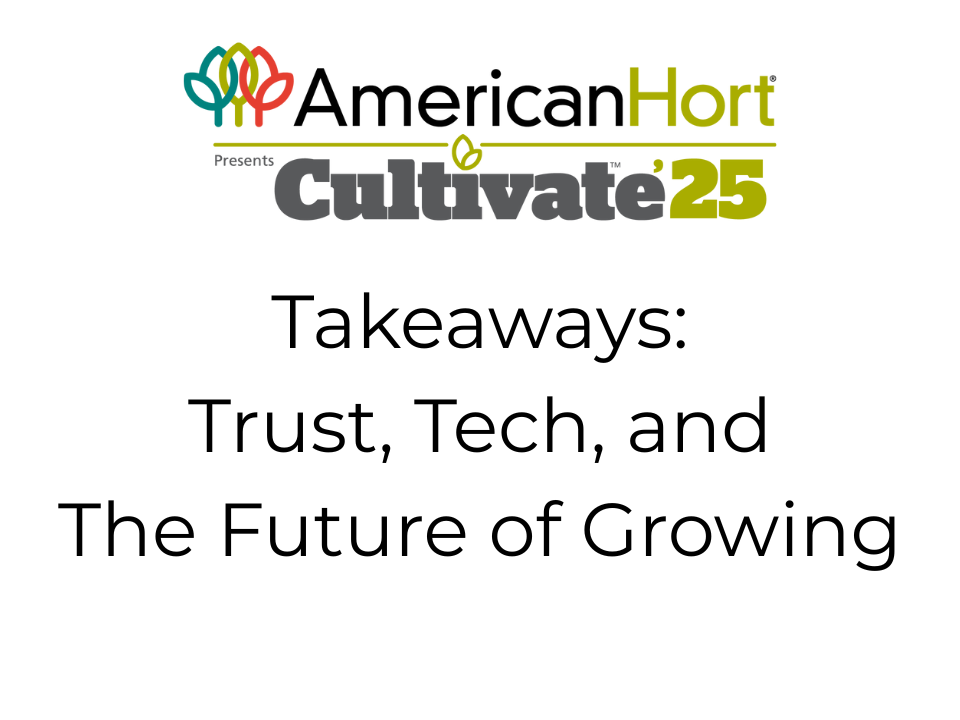
National Garden Bureau Has Released 2023 Year of the Plants Free Marketing Material
November 1, 2022
8 Things You Need to Know When Choosing an EDI Partner
November 9, 2022The use of scanning technology in a grower operation can improve data accuracy, speed data input, reduce labor costs and improve efficiency for a grower operation.
Implementing scanning in your nursery or greenhouse can yield these improvements to your operation but only with carefully planned implementation and a software and data eco-system that supports the data and scanning context and has the necessary data integrations you need.
There are several design and planning questions that need to be answered before an effective scanning system design can be realized. Each of these is specific to your operation and growing situation.
What Are You Going to Scan?
Regardless of the situation you must pick what value you will scan. Depending on the situation that value will be numeric value or a string of text characters. Whatever it is, the value must have meaning to your back-end software.
Scanned Data Values
For many growers who sell to the larger big box retailers such as Home Depot or Walmart the value that is scanned is the UPC of the item. For other growers the value scanned could be a crop id number or a production work order number which would identify a specific group of plants grown or produced together. For growers that utilize tissue culture propagation it could be a lot number on your media containers that you scan.
If you choose to use a UPC or a crop ID or work order number, you are identifying a whole group of individual items that could be on the nursery or green house.
In more stringent environments such as botanical pharmaceuticals production you may have to scan a serial number which identifies a specific individual plant.
You could even implement a specific secure URL as your scannable code (See QR section below).
The actual value you choose to scan depends on the scenarios you want to scan, the software systems you have and the context of the scanning.
At its core, a scanner simply reads the encoded (either optically via a bar code or via radio frequency for NFC/RFID) and converts them into typed characters (or numbers) on a screen.
Where Are You Going to Scan?
Once you decide what you will scan the other important decision is what is the operational scanning context.
Operational Scanning Context
The operational scanning context deals with the specific task or situation you will be scanning for or in. The scanning context combines the task you are doing with the scanned data to realized a systematic update.
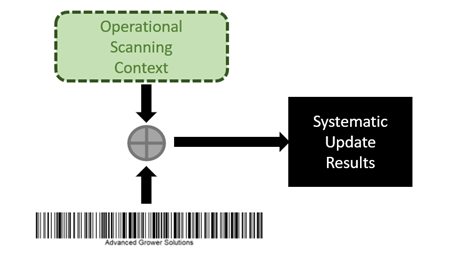
Example Operational Scanning Context
Copyright Advance Grower Solutions
For example, think of the self-checkout line in the grocery store. The context you are scanning is to record the items that you are purchasing for payment. The application in the scanner itself implements this context. In this case the context plays out like this:
Scan Grocery Item -> Look up and display price -> Add to running total -> Wait for next scan or PMT
Once you complete your purchase the grocery store back-end system removes the purchased items from their store inventory to complete the operation.
In this example the scanning application at the grocery store has been programmed to ‘know’ to add the scanned item to your running list of items and then, upon checkout take your payment and remove those items from the store inventory.
Grower Scanning Context
In the grower situation you have the same design considerations and many areas within the typical grower operation where scanning can be applied.
- As the grower you must decide where in your operational flow will you scan?
- Do you want to use scanning to update inventory?
- Is scanning a way you want to identify or mark what is available for sale?
- Is scanning used for recording items to complete an order pull?
- Does your operation need product movements to be recorded by scanning?
- Will you use scanning to record scrap or shrink?
- Will you use scanning to record fulfillment of a sales order to a customer or create shipping documents?
- Will you use scanning to identify received products?
All of these are relevant contexts for a grower operation to integrate scanning by creating a context then implementing the scanning flow.
Example:
In Advanced Grower Solutions Direct to Store Product (DTS), we have a screen where a retail merchandiser can scan the UPC code on a plant and mark it for scrap or shrink due to quality reasons. This allows the merchandiser to keep accurate in-store inventory. The scan context flow in this case plays out like this:
Go to scrap screen -> Scan Item -> Enter Qty -> Save -> Go to next item
In our example, the scanning work context is telling the system which items need to be scrapped. We have a web page purpose built to implement that scanning context for retail inventory management.
Implementation of Scanning Context
The scanning context is implemented in a dedicated mobile scanner app, a normal mobile phone or tablet app or using a web app with a web page purpose built for a scanning workflow context. The implementation is dependent on the grower software you use for your greenhouse or nursery operation.
You can also use an in-expensive Bluetooth or USB scanner to scan values into an Excel or Google spreadsheet. In this case the context is the data you are collecting in the spreadsheet. You would typically use the scanned value in a lookup or other data join to provide additional details in the context, just as using a UPC code scanned value to lookup the product name or current price or inventory level.
What Type of Scan Will You Use?
Optical Scanning
Optical scanning requires a unique barcode to be generated (printed) and printed on paper or some surface or label. These types of barcodes are what most people think of they think about scanning.
Optical scanning requires a clear image of the barcode to be scanned and a device that can ‘see’ the barcode – even in the conditions of the greenhouse or nursery.

Example of a Code-128 Barcode
Copyright Advance Grower Solutions
RFID or NFC Scanning
In RFID or NFC scanning the scanner emits a radio frequency and the encoded data in the tag is broadcast back to the scanner, decoded, and then printed on the screen.
The most common application of RFID are the security tags in the retail stores that protect items from theft.
In a grower context typically RFID labels are used and either hand scanners with the appropriate radio frequency decoding hardware are used or there are stationary antennas strategically placed where product movements can be recorded.
What Type of Optical Scan Code Will You Use?
There are many types of scan codes and lots of technology behind them. I will cover 2 very high levels of common types of scan codes. Note: many times, the system you will use can determine what type of scan code you will use.
Types of Optical Bar Codes
1D or One Dimensional
One dimensional bar codes are what we see most often on purchased products from stores which encode the UPC number of the product in one of the encoding schemes.

Example 1D barcode
Copyright Advance Grower Solutions
2D or QR (quick response) Bar Codes
Two dimensional or 2D bar codes create a square graphic to encode the data you want to scan. The most common application of this is the creation of a code to make it easy to access a webpage without typing in the web address, thus the name ‘quick response’ code.

QR code for our website: http://advancedgrowersolutions.com
Copyright Advance Grower Solutions
Quick response type codes are also used now for the electronic scanning of boarding passes for airline flights as well.
What Devices Will You Use to Scan?
Mobile Smart Phones and Tablets Camera Scanner
Most modern mobile phones and tablets have embedded cameras that certain applications can use to enable scanning.
Dedicated Mobile Scanner
A dedicated mobile scanner device is purposely manufactured for scanning and has usually been ruggedized for industrial use. If you receive deliveries from FedEx or UPS they typically use dedicated mobile scanner devices to track deliveries.
Mobile Device or Laptop with USB or Bluetooth Scanner
A third option is a normal mobile device or tablet using an attached USB or Bluetooth optical scanner. The advantage of this can be speed but make sure the scanner you choose will operate well in the environment of use.
What Media Will Hold The Scannable Image or Tag?
Growers also must decide what media will hold the scannable image or scan tag. Growers have a number of options depending on their specific tagging scenario.
- Individual separate tags/stickers printed by the grower
- Pre-Printed Tags/Labels/stickers
- Printed/Printable pots
Growers have a couple of scenarios. A grower can tag an item for their internal scanning operation with a tag or sticker. For some growers, who sell through big box type retailers or other specialty retail outlets, have to ‘tag for the customer’ and their retail environment. Typically, this means procuring or printing agreed tag formats with defined UPC codes that map to customer SKU for the purposes of scanning the product at the retail register.
Real World Scan Examples
Below are some real world examples of stickers and tags that can be used in implementing scanning in your operation. This is only a small sample of a wide variety of ways to implement scanning.

Sample Raw Material Receipt Scan sticker for scanning raw material receipts.
Copyright Advance Grower Solutions

Work Order or Crop ID Scan sticker for scanning in greenhouse information
Copyright Advance Grower Solutions
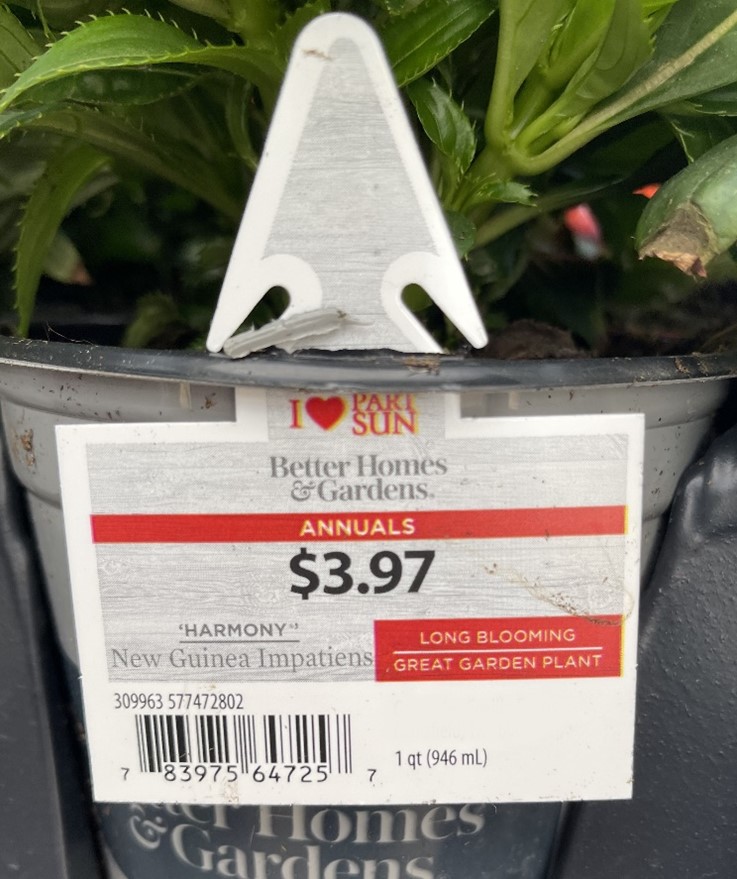
Retail scannable hanging tag with Product UPC (Courtesy Walmart)
Copyright Advance Grower Solutions
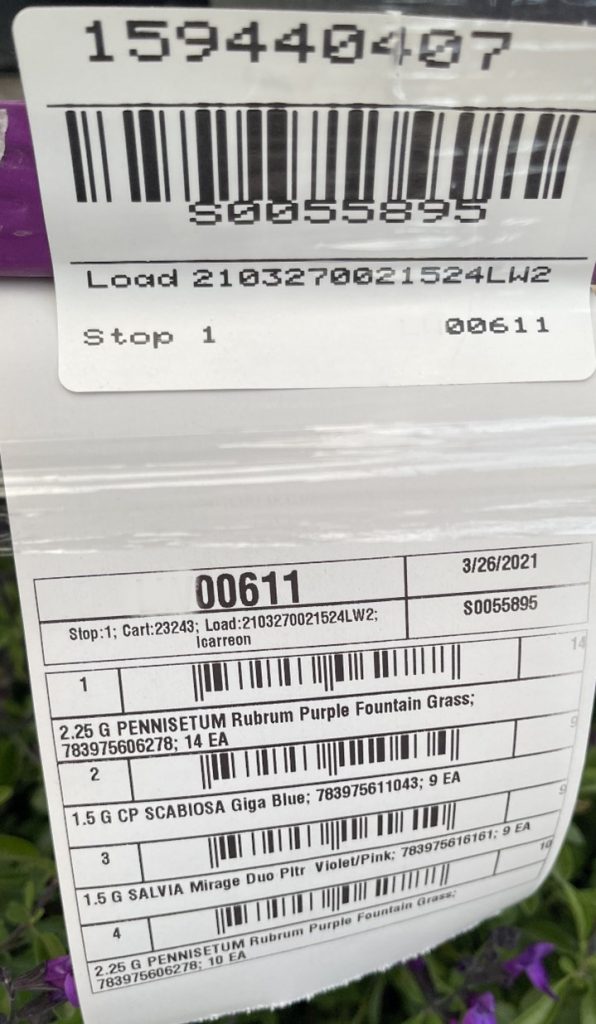
Sales Order and Shipping Rack Manifest for scanning shipments or retail receipts
Copyright Advance Grower Solutions
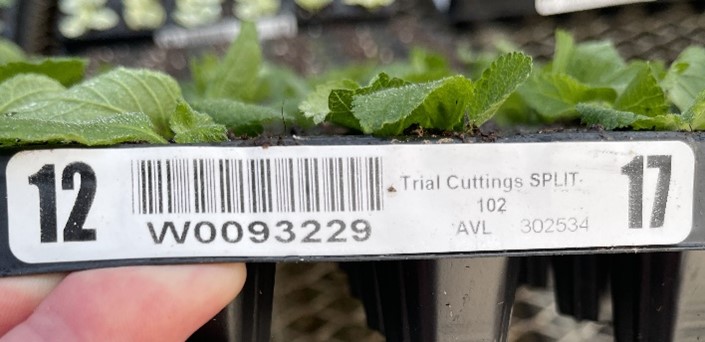
Scannable Production Sticker
Copyright Advance Grower Solutions
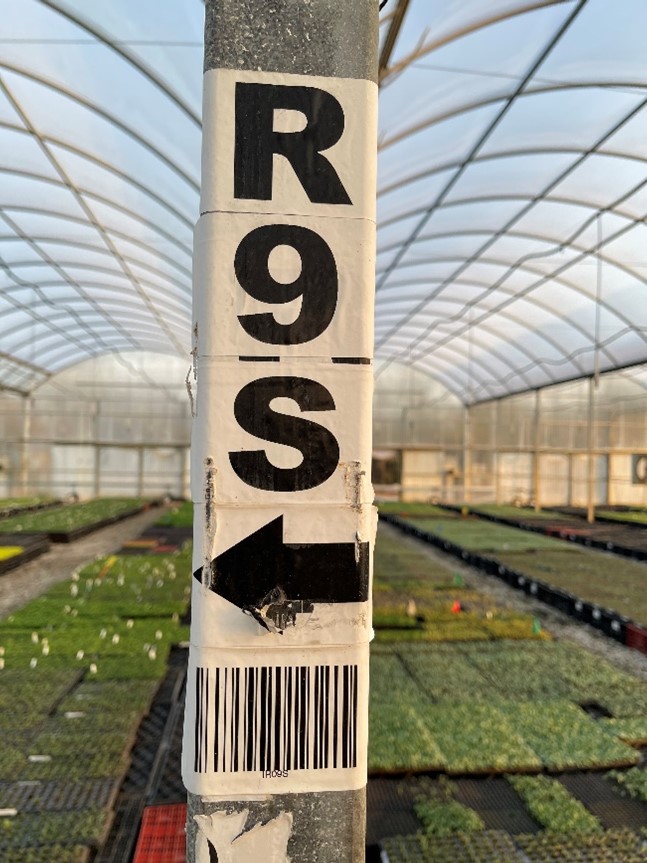
Scannable Greenhouse Location Sticker for location inventory lookup or other bulk operations
Copyright Advance Grower Solutions
Bottom Line
A well-designed grower software and data architecture can allow a grower to implement scanning in their critical operational steps to improve labor efficiencies in some areas, reduce errors, speed processing and have better visibility in their data systems.
Advanced Grower Solutions can help you analyze and design how scanning may fit into your operation today. Contact us to find out more.

